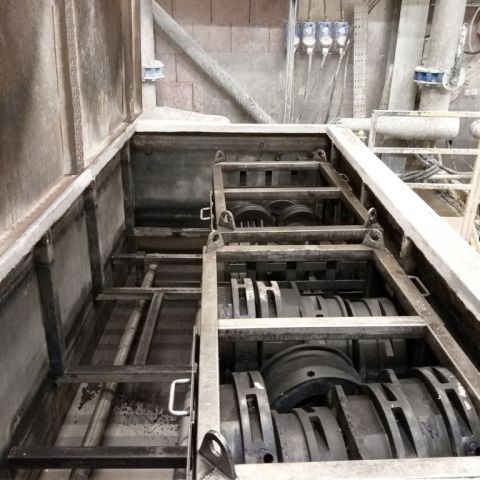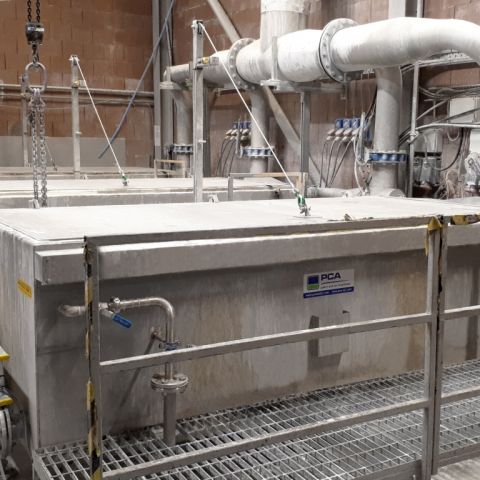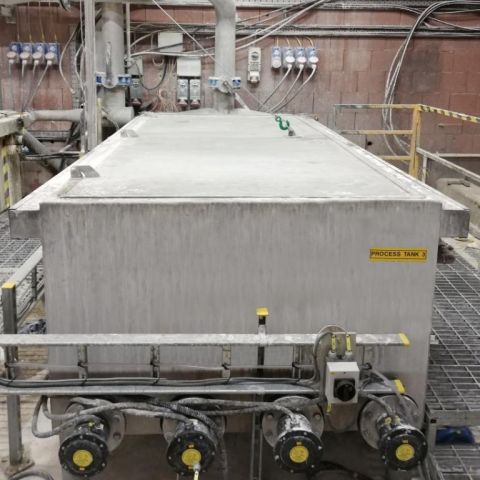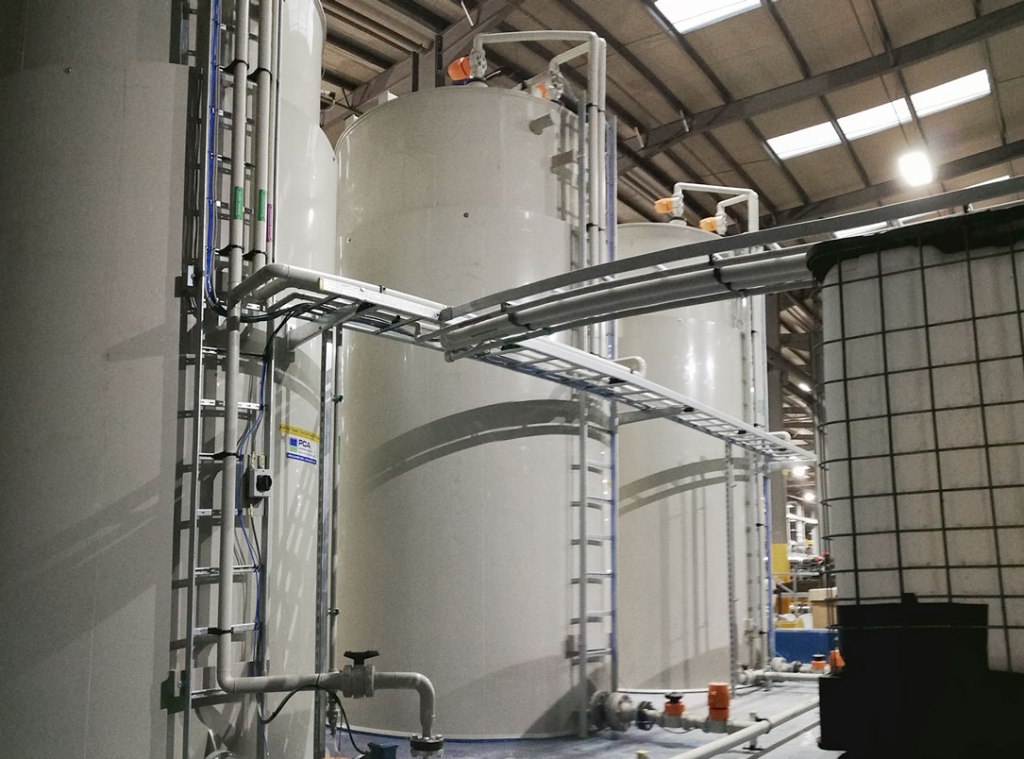Safe extrusion at Smart Systems
Smart Systems attaches great importance to the safety and health of its personnel. They make aluminium profiles for various commercial and private purposes. During the production process, the aluminium is extruded. After extrusion, aluminium residues remain on the dies. The cleaning of the dies is done with NaOH. This can be done in different ways. The difference is mainly in the safety of the operator.
The unsafe, old way
The operator uses a manually operated hoist to lower a basket filled with dies into a process tank. The process tank is filled with NaOH 30% at approximately 80°C. The dies are immersed in the tank for a certain period of time. Sodium hydroxide reacts with the aluminium on the dies and dissolves the residues partially. In a second step, the dies are transferred to another tank and rinsed off with water.
The main risk here is if a die would fall out of the basket or the basket itself would come loose from the hoist. The operator can then get the warm, concentrated NaOH on his skin and suffer severe burns. In addition, vapours and H2 gas are released during the process. Hydrogen gas is highly flammable and can cause asphyxiation in large quantities. The operator must lean over the tank to lower the basket. All this creates an unsafe and unpleasant situation.
The safe, PCA way
PCA developed and built several times already a system where the basket of dies is loaded into the process tank when there is no NaOH present in the tank. The operator closes the lid of the process tank after which the cleaning process starts fully automatically. First the process tank is filled with a NaOH solution that reacts with the aluminium residues. After this, the tank is automatically emptied and filled with rinse water. The cleaning and rinsing is done in the same tank. At the end of the cycle the tank is pumped empty again and the operator can remove the basket with dies from the process tank without any risk. The operator no longer comes into contact with the corrosive base. Due to a high flow rate of air ventilation in the tanks, H2 concentrations remain low.
The process is not only safer and in a more pleasant environment, but also ensures a more efficient procedure. This is because less manipulation of the dies is required and the process will run much faster. The many safety regulations that must prevent contact between the operators and sodium hydroxide can be made more flexible. In addition, because of the air ventilation only a minimal amount of vapours and H2 gas is released during the process.
Are you looking for a safe way to clean dies? Or do you have further questions about the cleaning process? Contact us and discover a tailor-made solution for your problem.




